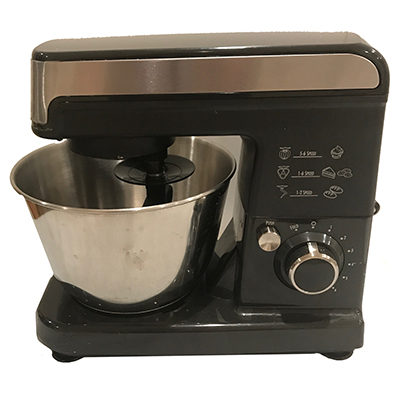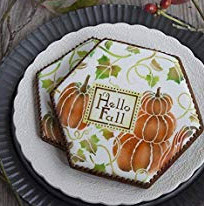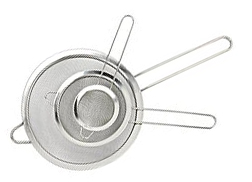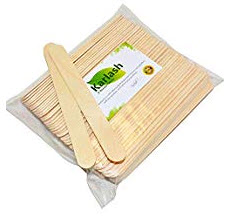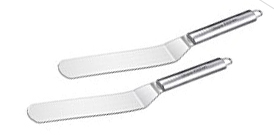Royal Icing: Assemble Supplies
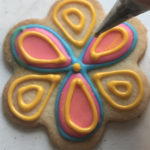
Obviously, in order to learn a new skill at home, you need to be organized.
The lists that follow identify what you need for your practice sessions, so use them for your shopping list With the exception of cookie making supplies, you’ll be all set.
After learning how to standardize your frosting consistencies through these tutorials, you will continue to practice your piping skills so you can create superb wet-on-wet designs, cute illustrations, transfers (3D sugar candy you can place on frosted cookies and cakes) and more all before you touch a cookie.
If, however, you live dangerously (like I did prior to creating this tutorial series), make cookies to frost the moment you understand the basics. No matter what they might look like, they will be good to eat and your family will love you for your effort.
Major Ingredients for Royal Icing
◊ Powdered Sugar finely milled:
⇒ A 2 pound bag of finely milled (10 X) powdered sugar.
⇒ An extra bag of powdered sugar for use in adjusting consistency.
◊ Meringue powder or egg whites, depending on your recipe.
◊ Flavoring, such as vanilla, almond, etc. Coordinate this with the flavoring used in your sugar cookies.
◊ Gel food coloring: Note that for small batches, you dip a toothpick into the coloring, then swish it in your batch. Wilton’s 1/2 ounce food coloring containers are easiest to use for this procedure.
Items Used to Testing Frosting Consistency
◊ Small, inexpensive timer: Timers can be purchased for as little as $5. While you can a sports timers or your cell phone’s timer, you’ll get sticky sugar all over them. Dedicate an inexpensive timer to this job.
◊ Inexpensive humidity monitor: The humidity of your home changes throughout the seasons dictating the amount of time you manipulate your Royal Icing. The more humid, less water, while very dry conditions require more. Be mindful of your environment and adjust your batches as needed.
◊ Toothpicks, bamboo skewers, or similar objects: Use these for testing consistency, popping unwanted bubbles, adjusting piping, and creating designs.
◊ Fan: Use a fan to quickly dry your frosted cookies to prevent popped bubbles which can form over time without you suspecting that they will, surface cracks, and color bleeding. Use a fan even when you are just practicing so you understand what the result of your work will look like.
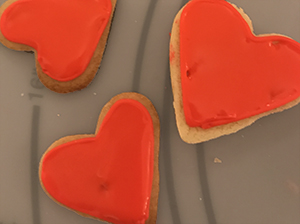
Practice Sheets
◊ Plastic sheets: You can never make enough cookies to practice your Royal Icing skills, so instead, practice on clear plastic sheets. Best, you can put patterns under these sheets to develop more complex piping skills. Better yet, after your practice Royal Icing dries, you can eat it like candy.
◊ Patterns: To start, pipe over lines, boxes, and circles. As your piping Print or draw patterns to place under a plastic sheet for use in tracing. As you progress, practice on more complex patterns, such as though you draw yourself, or you find elsewhere, such as in simple coloring books, Google image searches, and perhaps Pinterest.
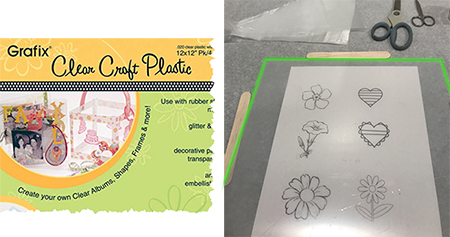
Major Appliances
◊ Stand mixer with paddle blade, powered by 300 watts or more. While you can mix Royal Icing by hand (but probably not with a hand mixer), a heavy-duty mixer with a flat paddle blade attachment is more appropriate. Hamilton Beach sells one for under $100.
◊ Optional: Food-grade spray paint gun: A delightful way to design Royal Icing on sugar cookies is to use stencils and an airbrush, such as the one designed by Julia Usher. Invest in this option after you’ve mastered your consistency skills.
Piping Bags
◊ Inexpensive, disposable bags: During your learning period, you’ll throw away many piping bags, so buy inexpensive ones. Check online for price comparisons, starting with 12-inch bags in a pack of 100 or 200. As you’ll only use a few inches of Royal Icing at a time for most testing procedures, you’ll probably cut the top have of your bags off to make them easier to handle.
◊ Parchment bags: I learned by using using “fold it yourself” parchment bags that are convenient and very inexpensive. This topic will be covered under a separate tutorial, however, as there are pros and cons to how they are used. If you want immediate information, however, search the web on the phrase “making parchment piping bags.”
◊ Sandwich-sized plastic bags: You can make mini-piping bags out of sandwich bags by cutting a bag into quarters and snipping the remaining corner off.
◊ Binders: These include small snack-bag clips, rubber bands, and even transparent tape. Note that plastic piping bag bands are too large on bags that hold small batches.
Piping Tips and Spreaders
◊ There is no hole standard for piping tips, so start with a size 2, 3, and maybe 4 of any available brand. Sizes 1 and below are too small for this tutorial and should only be used when you are skilled at mixing the proper consistencies as they clog easily. Buy 5 tips of each size.
◊ Piping tip cleaning brushes
◊ Tip couplers to hold tip in place: Be aware that washing tips and couplers takes a lot of time, especially if you allow the tip to dry. You might also need a lot of them depending on how many colors and consistencies you need for a project. For starters invest in 5 for each tip size you buy, or you can use the alternative method, which is . . .
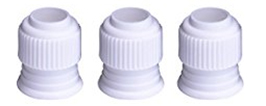
◊ Scissors: Instead of reaching into your sewing drawer, keep scissors (tiny and standard) with your Royal Icing equipment. They will become coated with icing over time and their surfaces require scrubbing if the icing is left to dry before clean-up time..
Preparation Equipment
◊ Several small mixing bowls, maybe 6 to 8. They should be large enough to hold at least one and a half to two cups of frosting.
◊ Air-tight storage bowls of various sizes to hold your main batch of Royal Icing.
◊ Fine, mesh sieves, small, medium and large. Because I live in a seasonally humid area, I sift powder sugar before use, even when I use a small amount of it to adjust consistency. I also run premade, stored Royal Icing through a sieve before using it again to make sure dried flakes do not drop into the refreshed batch. This is especially important when using very small piping tips, size 1 of any brand and below.
◊ Toothpicks or wooden skewers
◊ Medium-sized, wooden craft sticks (also known as “tongue depressors“): Used as disposable “spoons” and stirring devices.
◊ Silicone mixing spoons or spatulas, various sizes: Have several.
◊ Slim offset (bent) spatulas: Use these for moving and lifting cookies to avoid touching wet frosting.
◊ Glass, food grade spray bottle: Spray small amounts of water into Royal Icing for thinning purposes.
◊ Paper towels: In addition to continually wiping up, I also dampen sheets and lay them over the top of the Royal Icing in small bowls under use. This keeps the icing from drying out and the sides of the bowls free from dry icing flakes.
◊ Waste paper basket
◊ Large bowl of hot, sudsy water: This you’ll probably keep in your sink. Simply make sure that the water is hot and sudsy as Royal Icing dries quickly and can be difficult to get out of utensils or tips unless you soak them immediately after use.
◊ Racks or trays of some type to hold cookies while the Royal Icing dries
◊ Gallon sized plastic bags: Cut these up so you have two sheets made from the front and back, instead of one bag. Use these to cover waiting frosting during your production cycle. The heavier plastic provides an easier-to-handle frosting protector than plastic wrap.
◊ Plastic wrap: You’ll find a need for plastic wrap, however, the problem with it is that on the surface, Royal Icing dries quickly. If you protect it with plastic wrap, flakes start forming where the wrap touched the frosting causing the wrap to shed dried flakes. If dried flakes land in a mixing bowl, you’ll usually need to strain the frosting so it spreads smoothly.
◊ Damp washcloth: You’ll use this often to keep your hands free of frosting and dried frosting flacks.
◊ Recommended – heavy plastic disposable table cloth: Royal Icing drys like cement. To save time and keep your work area clean after finishing a project, do it on a disposable table cloth.
Article Series
For Royal Icing recipes, CLICK HERE
To see a list of all articles in this series, CLICK HERE
Questions? Comments? Additions? Corrections? Write to Karen Little at karen@Littleviews.com
Written for Littleviews-Crafts.com by Karen Little, publisher. All rights reserved, but feel free to re-publish this article after contacting Karen so she knows where to find it.

